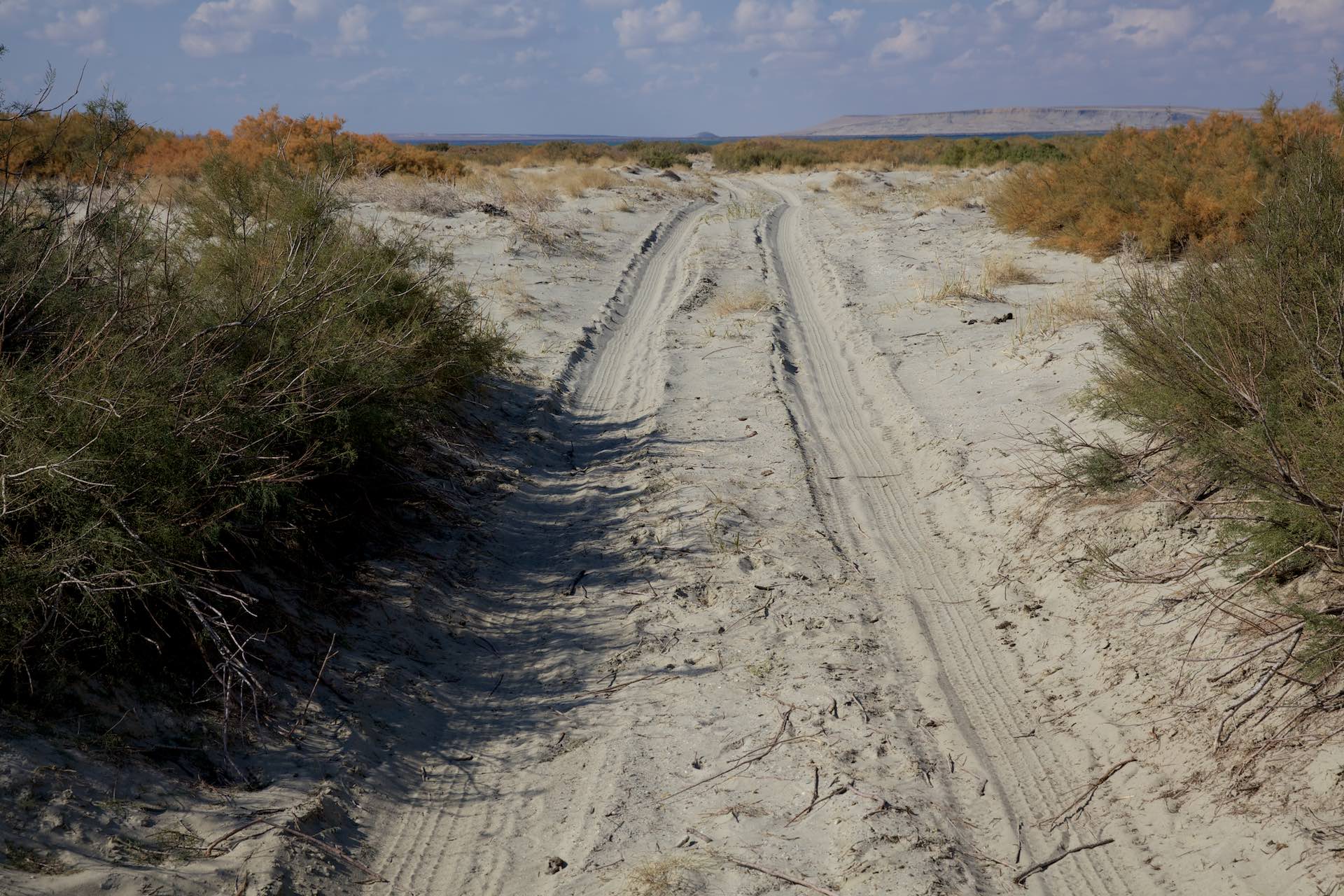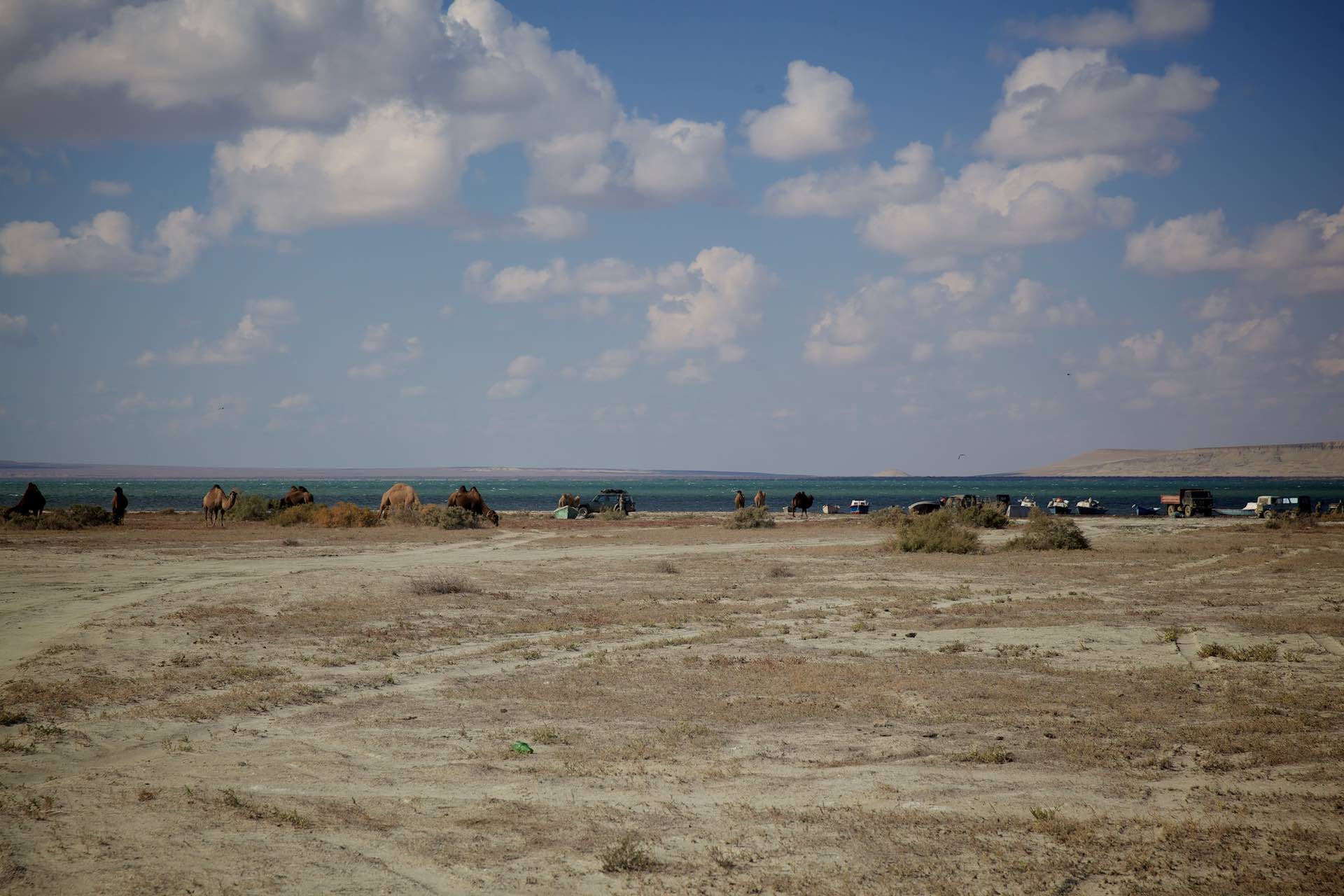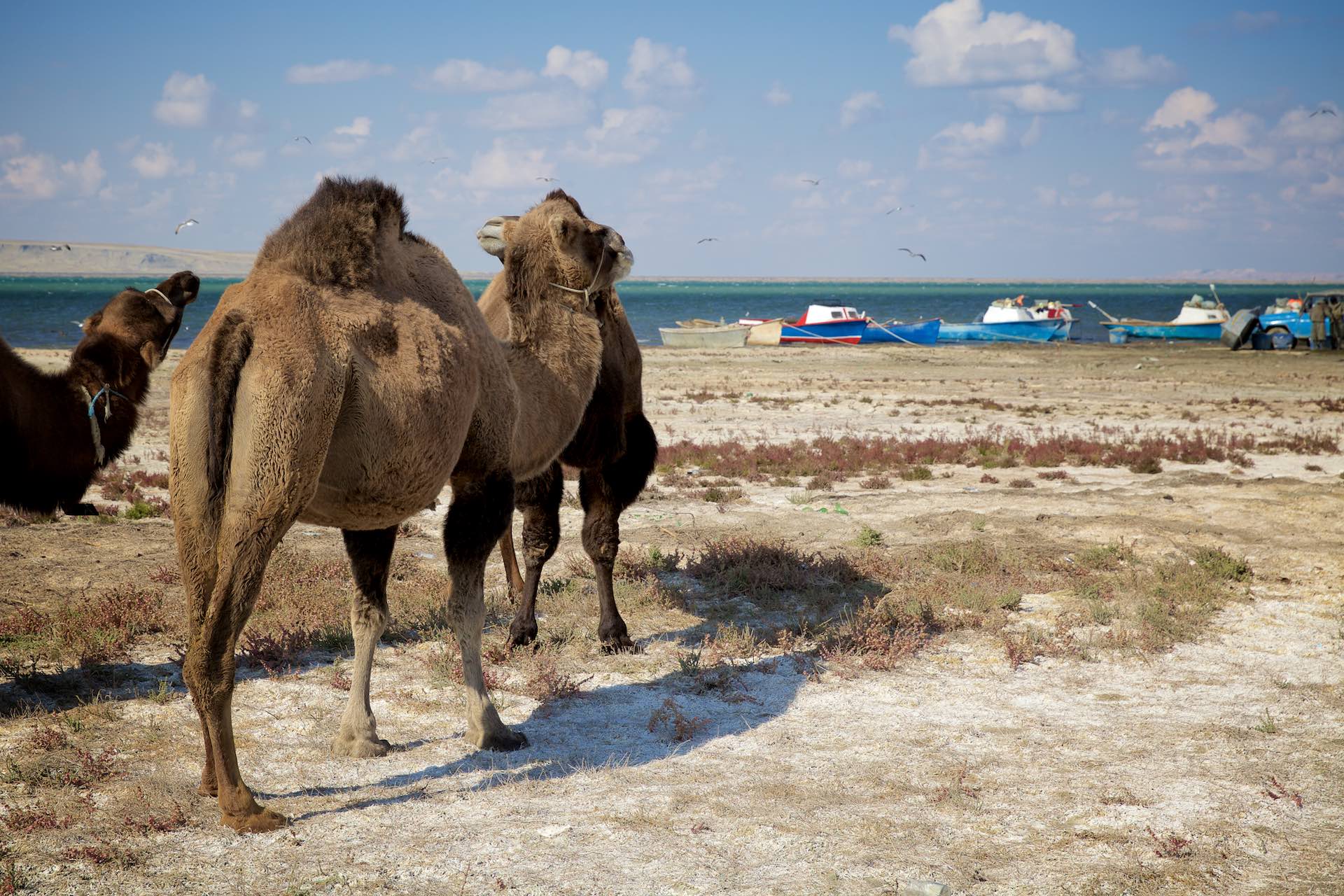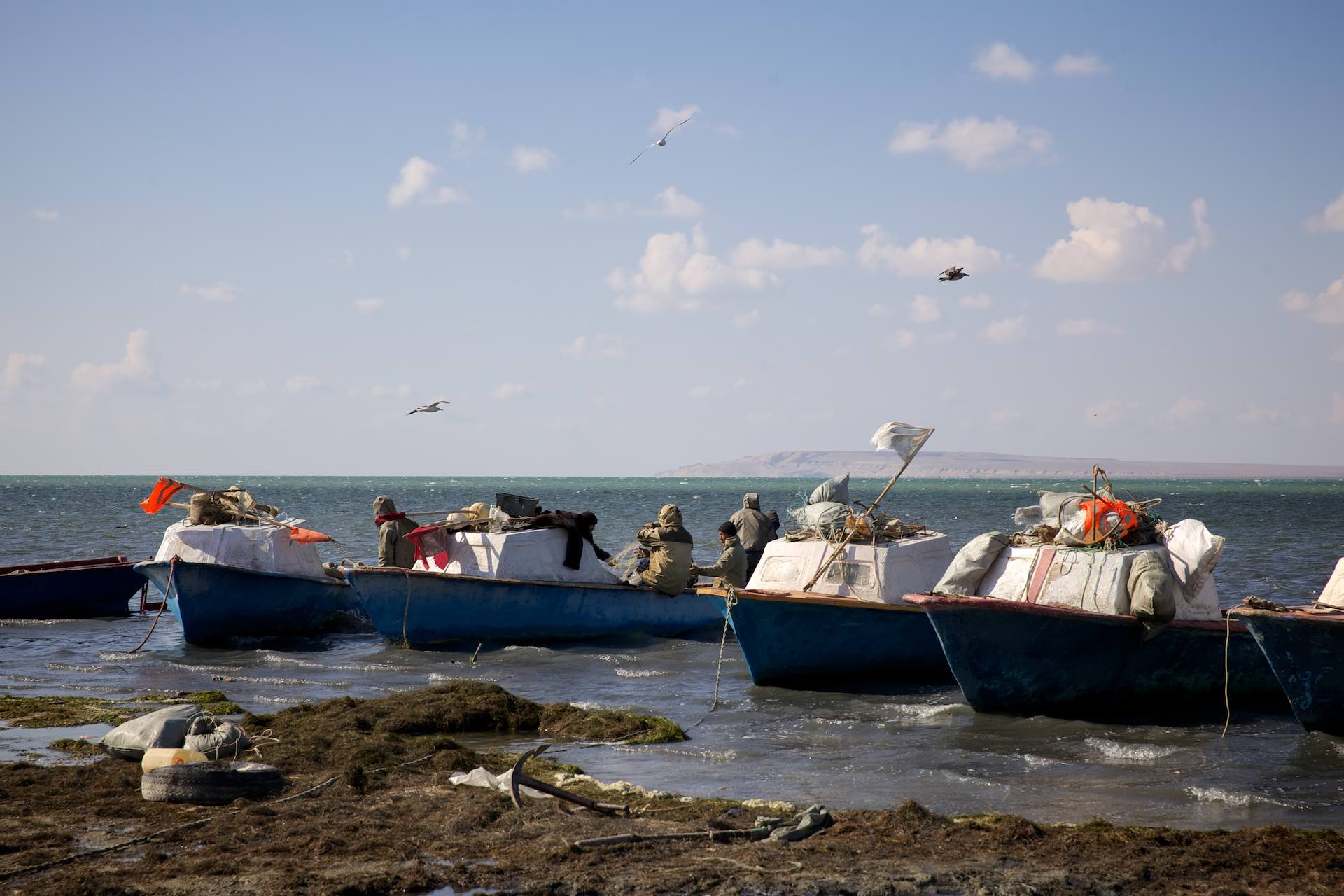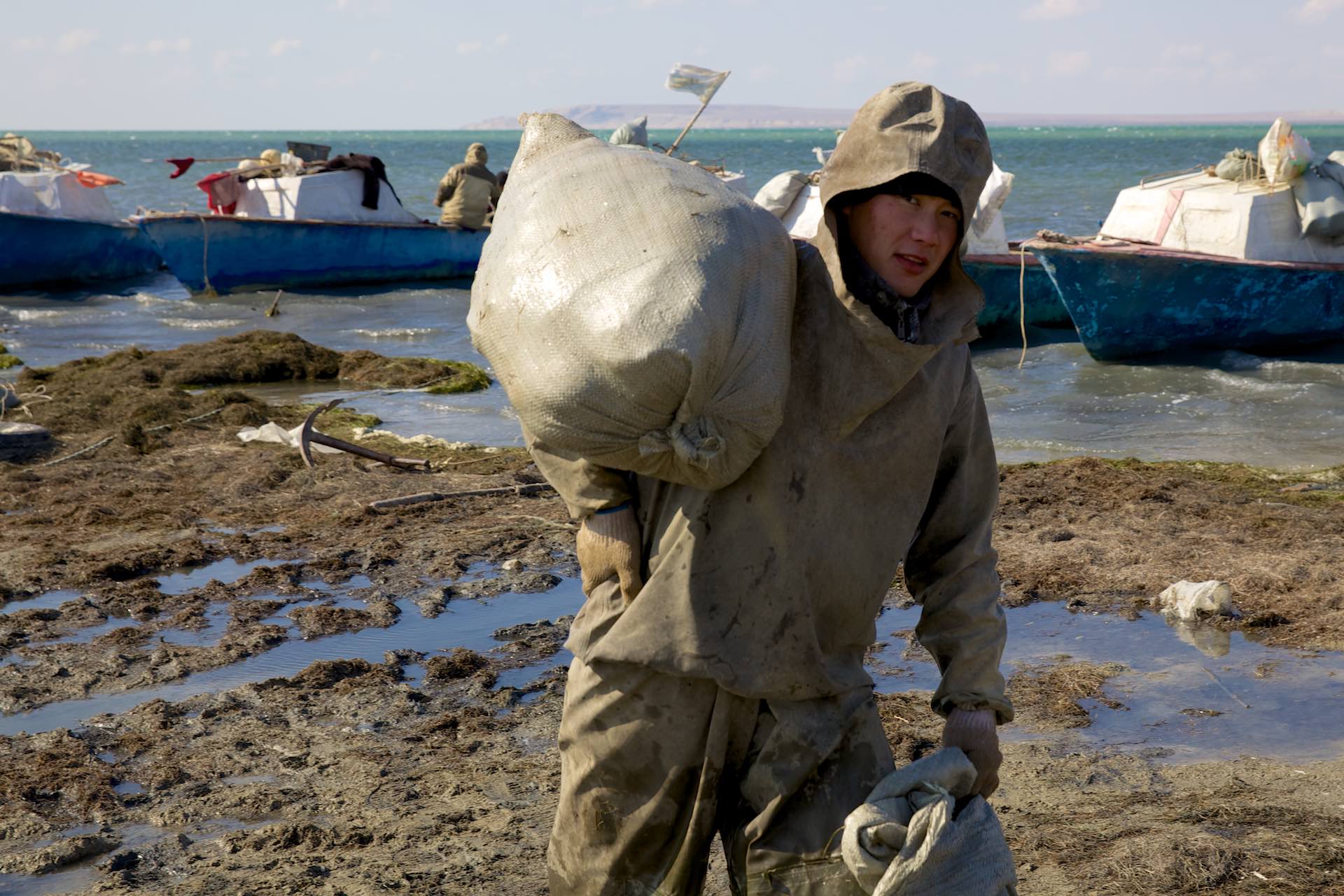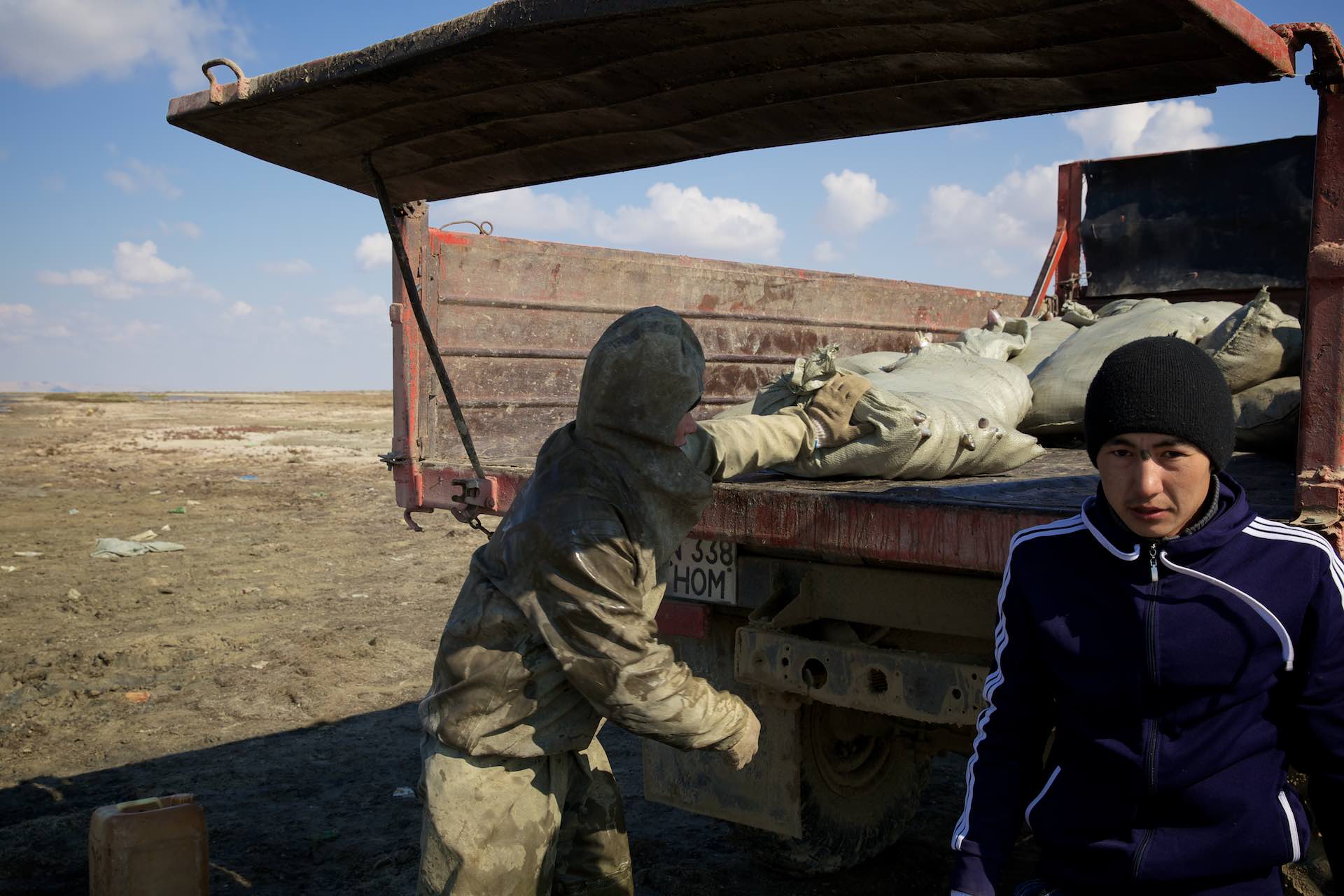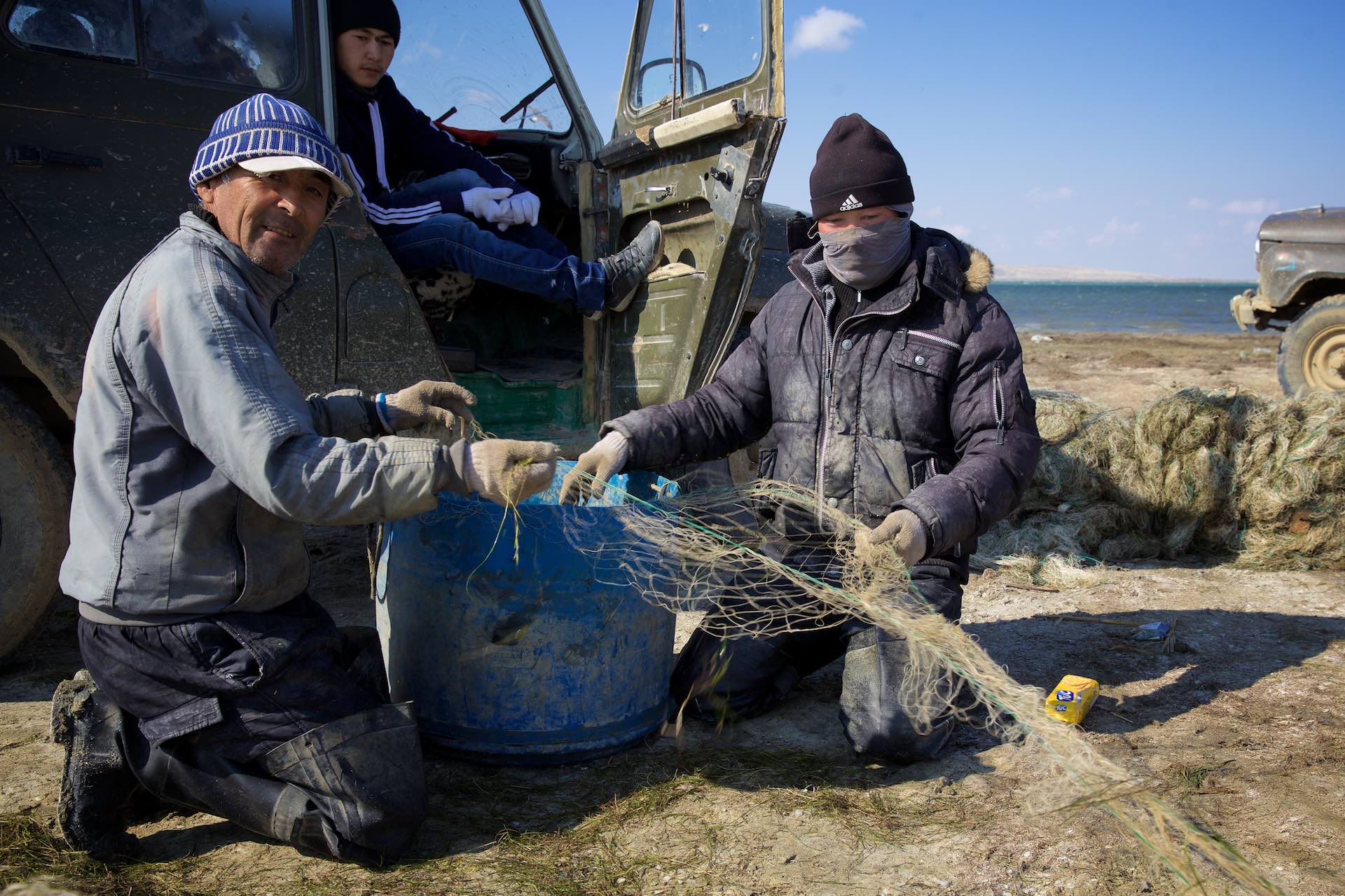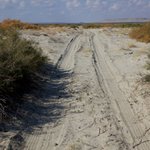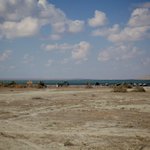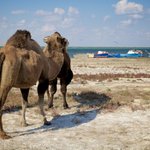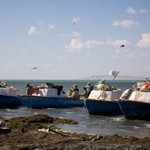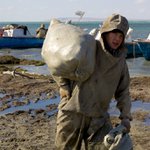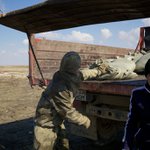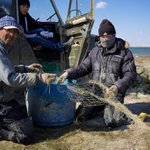The Aral Sea
On our journey through the Kazakh steppe we pass the Aral Sea. Its story is well known: Soviet planning diverted the waters of its main contributory rivers to irrigate cotton plantations. The sea retreated, salinity rose, and most fish disappeared. What remained were the trawlers left behind. The rusting hulks in the desert became an iconic image of this man-made disaster, a picturesque warning against hubris and megalomaniac development schemes.
Curious to see one of these famous ship cemeteries, we drive to Zhalanash, about 60 km from the town of Aralsk. But the hulks are gone. The last few were dismantled and sold as scrap metal to China last year. What remains is the sandy desert that was once the sea bed.
However, thanks to a dam constructed a decade ago, the water levels in the northern part of the lake are slowly rising again. Salinity has decreased and several species of fish have successfully been reintroduced. Another 30 km further on, at the actual shoreline, we encounter a group of fishermen loading their catch onto trucks and mending their nets. We are invited for tea and biscuits.
The wind is cold and exceptionally strong today and the boats are small. Taking them out in this weather is risky. Nevertheless, the revived fishing industry brings hope. One to two tons of fish are caught here per day, we learn. This pays for education, vehicles, construction materials. Last year, the fishermen had a single old truck. Now, some of them are already driving their own jeeps.
Privacy Policy
Plain and simple: I take the principle of minimal data collection serious and try hard not to collect or process any personal data beyond the basics required to serve and maintain the website.
Specifically,
- We do not use cookies.
- We do not use third party analytics.
- There is no contact form that would allow you to enter personal data.
- We do not use advertising to run this website.
In order to serve this website, your IP address and information about your browser, operating system and screen resolution need to be collected and processed. theotherimage.com is a simple, handcrafted, static website hosted by Netlify. It uses fonts by Adobe Fonts (formerly Typekit). Both Netlify and Adobe automatically collect usage data, either generated by the use of this website or from the service infrastructure itself. This data is used for accounting and analytic purposes as well as for technical maintenance by these two companies. Neither Netlify nor Adobe use cookies to track you. Specifics can be found in their respective privacy policies.
The videos on this website are hosted by Vimeo. Depending on your browser configuration, Vimeo may use cookies and other tracking technologies as stated in their respective privacy policies.
If you have any questions about this privacy policy, please write to: Martin Saxer, LMU Munich, Department of Social and Cultural Anthropology, Oettingenstr. 67, 80538 Munich, Germany.
This privacy policy has been updated on 30 December 2018.
![[ the other image ]](/images/logo/toi-logo_2x.png)
